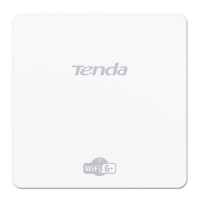It specifies the encoding format of Chinese characters in an SSID. The default value
is UTF-8.
If multiple SSIDs of the AP are enabled and contain Chinese characters, you are
recommended to set this parameter to UTF-8 for some SSIDs and to GB2312 for
others, so that any wireless clients can identify these SSIDs.
It specifies the security mode of the selected SSID. The options include: None,
WEP, WPA-PSK, WPA2-PSK, Mixed WPA/WPA2-PSK , WPA, WPA2, WPA3-SAE,
WPA2-PSK&WPA3-SAE.
Security Mode
A wireless network uses radio, which is open to the public, as its data transmission medium. If the
wireless network is not protected by necessary measures, any client can connect to the network to
use the resources of the network or access unprotected data over the network. To ensure
communication security, transmission links of wireless networks must be encrypted for protection.
The AP supports various security modes for network encryption, including
None
,
WEP
,
WPA-PSK
,
WPA2-PSK
,
Mixed WPA/WPA2-PSK
,
WPA
,
WPA2
,
WPA3-SAE
,
WPA2-PSK&WPA3-SAE
.
◼
None
It indicates that any wireless client can connect to the wireless network. This option is not
recommended because it affects network security.
◼
WEP
It uses a static key to encrypt all exchanged data, and ensures that a wireless LAN has the same
level of security as a wired LAN. Data encrypted based on WEP can be easily cracked. In addition,
WEP supports a maximum wireless network throughput of only 54 Mbps. Therefore, this security
mode is not recommended.

